Nuclear-powered armored destroyer PRO/PLO

Project
So, the sounded project of the Russian destroyer in the article “Destroyer 2030 of the Russian Navy”, based on existing components and minimal budget costs, was at least not supported by the silent majority of the audience, and ostracized by the aggressive minority of globalist minions. After all, the latter have already found an object for adoration and admiration in the form of the gray mediocrity of the 22350M project!
But the destroyer is still needed, as in the Black Sea and the Baltic at least one each to replace the deceased flagship of the Black Sea Fleet GRKR "Moskva" and the hopelessly outdated flagship of the DKBF destroyer "Persistent". But ships of the first rank are especially needed in the North and the Far East.
Just think, if the Nazi ukrovermacht in the tenth month of the war with the help of the Soviet drone managed to stab the base of strategic missile carriers deep in Russia for 700 kilometers, what potential opponents can do with the strategic bases of our fleet on the ocean coast, having arsenals of Tridents and Tomahawks on nuclear submarines in the adjacent waters?
And if the Euro-American bases are covered by land-based missile defense in Poland and Romania, then the American bases in Japan and South Korea are covered by the naval component of missile defense in the form of the destroyers Arleigh Burke, Kongo, Atago and Maya. And it’s far from a fact that these ships will not be deployed during the threatened period next to the so-called “bastions” of our SSBNs in order to try not even to let our SLBMs take off.
Our destroyer should become an outpost of the missile defense of the naval base, moved to the far sea zone; be able to cover the "bastion" of their SSBNs from threats from the air and from under water; be the backbone of the defense of any order of ships, regardless of the goals of its formation. To create a ship that meets the requirements put forward, it is necessary to set priorities correctly, and, strange as it may sound, the main priority must be given to reconnaissance (radar and hydroacoustics) and control means.
As a good example from a recent stories Let's remember how the A-30 aircraft was created around the seven-barreled 10-mm Gatling gun. So we will build a ship around the anti-missile defense radar proposed by Andrei Gorbachevsky in the article “Air defense efficiency of a promising destroyer. Alternative radar complex". I’ll just allow myself to reformat the concept of an alternative radar complex into a three-band radar complex (abbreviated as 3D radar).
3D radar
In order to completely close the upper hemisphere above the ship from the uncontrolled flight of the enemy's air and space attack systems, we place five AFARs (active phased antenna arrays) operating at a wavelength of λ = 70 cm in priority order at the most convenient position. Four arrays are traditionally placed along the perimeter of the superstructure, and the fifth is located horizontally on its roof.
In order to make the ship's hull as a whole in compliance with stealth technologies in the radar range, all its planes and surfaces have a constant equal slope of 10 degrees to the center from the vertical or 80 degrees from the horizontal.
Thus, to ensure a circular view of the AFAR along the perimeter of the superstructure, they have viewing zones along the horizon - 90 degrees each, and vertically - 55 degrees each.
Accordingly, the working area of a horizontally located AFAR will be +/-35 degrees both in the longitudinal plane of the ship and in the transverse one. To prevent the impact on the operation of the RLC of various types of pitching, it is located exactly in the center. On the conceptual drawings of the ship and in table No. 1, the location of the detection AFAR and their parameters are highlighted in red.
Drawing up an algorithm for the operation of the AFAR when performing the tasks of detecting and tracking aeroballistic targets is a rather complicated and responsible job. It should take into account complex activities in cooperation with the space constellation of reconnaissance satellites and the capabilities of the state missile attack warning system (SPRN).
But with the help of applied mathematics, we can try to form our own idea of it. So, if we limit the initial search in the AFAR responsibility sector of 90 × 55 degrees to an instrumental scanning range of 700 km, then we can count on a quick one-time scan of it in 2 seconds. During this time, a ballistic missile or warhead will be able to cover a distance of 6 to 15 km, but on the other hand, a 3D radar will be able to record the fact of target detection.
A search in an equally wide sector with a scanning range of 1 km will require more than 100 seconds, and this is without taking into account the need for AFAR to track previously identified targets. To cover the entire range of flight path altitudes, a scanning range of at least 3 km is needed (see Table No. 1), which means that in such a wide sector it will take about 500 seconds. It is worth noting that for the five "red" AFAR 2D-RLK, all aerodynamic objects in the atmosphere become targets, everything that starts into space or falls from it, and everything that flies in space in low Earth orbits, starting from Elon Musk's satellites, space debris and ending with habitable orbital stations.
The tasks are very difficult, both in terms of scale and energy intensity, and in terms of the required accuracy of coordinates and time. Obtaining reconnaissance information from satellites and early warning systems through interaction will allow targeted searches in narrower sectors (say, about 12 × 12 degrees) and at a distance of up to 2 km.
The second method to make the task easier is to transfer the tracking of targets from 0-400 km from the ship to the competence of the so-called "green" AFAR 3D radars.

And here the height of the flight of the author's fantasy can be limited only by the low value of the natural constant - the speed of light!
But first, about the principle of choosing ranges for 3D radar. No intrigue. We take as a basis the wavelength of 70 centimeters chosen and substantiated by our specialist for the missile defense radar, we divide it by five - we get λ = 14 cm, and again we divide by five - in the dry residue λ = 2,8 cm. The obtained values, in general and in particular fall within the international UHF bands permitted for radar; S; x.
If the first range of the radar complex (which has no analogues in the world today) is described by two red lines of table No. 1, then the more successful competitor of the famous American Aegis is represented by only the second green line. A third longer operating wavelength also entailed a corresponding increase in the geometric dimensions of the PAA antenna sheet while maintaining the same beam characteristics. An obvious small but pleasant bonus can be counted in favor of our locator by a smaller number of transceiver elements (3 units versus 364 American units).

And now let's step on the shaky ground of comparing the combat characteristics of locators based on incomplete and not always reliable (for obvious reasons) data.
It is well known that the "Polyment-Redut" on the frigate pr. -22350" with a maximum detection range of 4 km.
The Americans are less modest and more frank: Aegis in general on cruisers and destroyers can simultaneously fire up to 18-20 targets with a detection range of 320 km and with the involvement of 3-4 target illumination locators in the final section. Not very impressive compared to half the size of our frigate.
Yes, and it was not very necessary, under the umbrella of air defense from an aircraft carrier from an AWACS aircraft and a pair of fighters on duty. As the second range of the radar, we will put into service with our destroyer an AFAR with the characteristics from the first green line of Table No. 1, which in fact is a combination of four radars from the second green line. 64 simultaneously fired targets from a detection and tracking range of 400 km ...
As can be seen from the figures, the superstructure areas allow; the complexity of management, as we have the best IT specialists in the world in our country; too much - so look at the ammunition of the converted Ohio SSGNs with SLCMs.
As the last line of reconnaissance and defense at a distance of up to 150 km, eight X-band AFARs evenly spaced along the perimeter of the superstructure will be used (blue line in table No. 1). In addition to the fact that this gives an increase in the possibility of firing an additional 32 air targets in the near air defense zone of the ship in a circular manner, it will also allow concentrating the work of two AFARs from any direction of a detected massive raid.
Two frigates of project 22350 in an air defense order would have comparable capabilities. An additional function of the "blue" AFAR will be to control the firing of 57-mm artillery mounts. It is worth noting that to control any weapon, you can choose one of the three radars in the firing sector with the least beam shape distortion and loss of accuracy characteristics, or, within some sectors, control a pair of adjacent barrels to one radar.
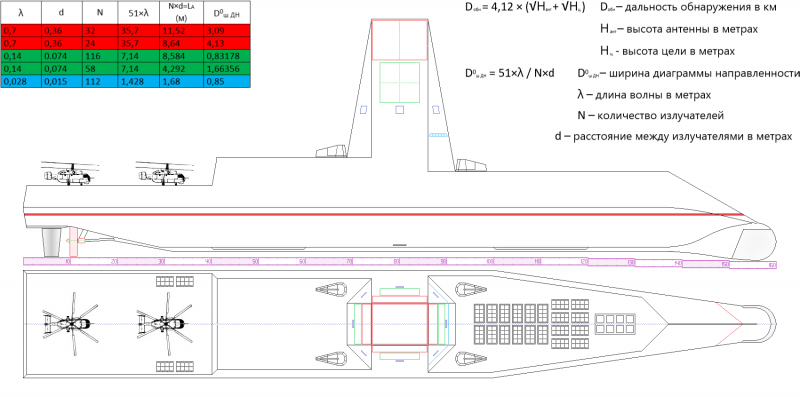
The total height of the ship from the waterline is 41,5 m, the electrical centers of the missile defense antennas are located at a height of 35,5 m (bow and stern AFAR) and 37 m (onboard AFAR), which corresponds to the level of placement of the Sampson multifunctional radar on British destroyers type 45, recognized favorites of naval air defense according to the West.
It is the maximum possible height of the antenna posts that makes it possible to detect the most dangerous air targets flying above the wave crests as early as possible due to the radio horizon line. The height of the ship at 41,5 m is, as they say, an application for victory. And do not shed crocodile tears about the possible death due to low stability. The cruisers of Project 1144 "Orlan" reach a height of 59 meters, the superstructure of the Japanese battleship of the times of the Second World War "Fuso" after modernization has grown to 40 meters, and before the First World War no one was surprised by the height of the masts over 50 meters.
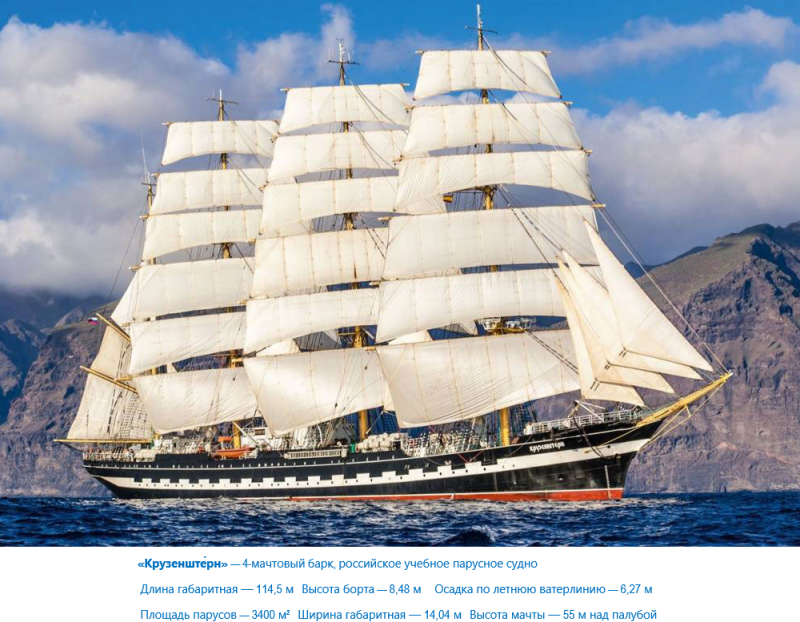
Arsenal
The broad capabilities of the ship's radar armament should logically correspond to the missile weapon. Eight 77N6 interceptor missiles rightfully become the main caliber. Actually, this ship should be built for them, and not just special vertical launch installations on it.
If we calculate the cost of launching a kilogram of payload into low-Earth orbit, the weight and cost of the spacecraft themselves, which can be destroyed by a salvo of eight missiles, then, probably, the construction of a missile defense destroyer may turn out to be a profitable commercial project.
I hope that no one will be cynical enough to calculate the cost of strategic defense facilities and the elite personnel on them, which can be destroyed by nuclear warheads intercepted on the way with the help of this ship.
As a possible prospect, the most powerful energy potential of subsequent modifications of these missiles can be used as carriers for launching satellites into orbits from the equatorial regions of the oceans in the form of a military alternative to the Sea Launch project.
Twelve 3S14 universal launchers on the deck in front of the ship's superstructure are able to console fans of strike variants of ships of the first rank. But the compromise must always be mutual. Therefore, in addition to the standard set of missiles of the 3S14 launcher (anti-submarine; anti-ship; KRSD), it should receive a registration of long-range missiles 48N6DM.
The 9M96D medium-range and 9M100 short-range anti-aircraft missiles will be placed in 3S97 shortened vertical launchers, eight of which are located in front of the UKKS UVP, and four more - along the edges of the helipad in the stern of the ship.
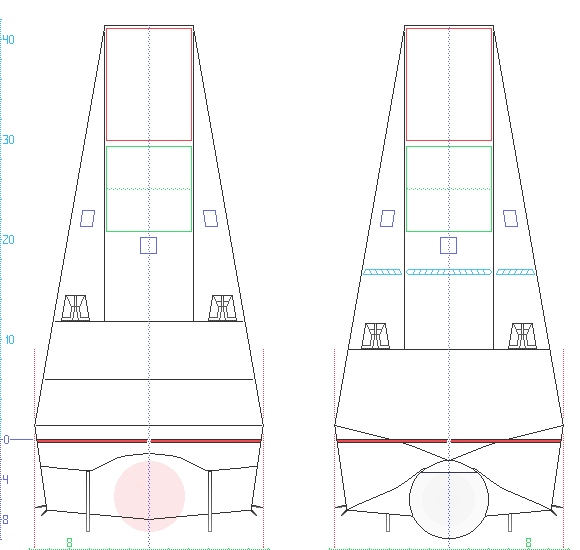
Four single-barreled 57-mm A-220M artillery mounts are offered as the last line of air defense and as a tribute to the naval traditions of having artillery on a warship.
It is hard to fight the inertia of thinking and tradition cast in bronze. But still, let's try to compare four AK-630s (say, on the destroyer pr. 956) and four A-220Ms on our ship. The barrel length of the old 54-caliber gun provides a projectile weighing 0,39 kg with almost the same muzzle velocity (1 m/s vs. kg. In other words, with an increase in caliber less than twice, we get an increase in the energy of the projectile by eight times. The horizontal and vertical pointing speeds for both installations are almost the same.
The new installation is a third heavier than the old one (6 tons versus 3,8 tons), but does this disadvantage matter for destroyers weighing several thousand tons? But the new installation shoots three times further (12 km versus 4 km). The only real advantage of the AK-630 over other artillery anti-aircraft systems is an order of magnitude higher rate of fire. It is comparable to the American 20-mm Vulkan-Falansk system.
Initially, a pair of these installations was included in the armament of the American destroyers Arleigh Burke, as the project developed, they tried to replace them with the 25-mm ZAU MARK 38, and on the Zamvolt we are already seeing two 30-mm single-barrel guns Mk 46, although according to the initial the project was supposed to have two single-barreled 57-mm artillery systems.
The 57-mm artillery system can overcome the advantage in rate of fire through the use of guided projectiles, proving its promise purely economically in terms of the "cost / efficiency" criterion. The visual representation of the stealth technology for our 57-mm caliber gun is given by the drawing of the American gun for the Zamvolt.
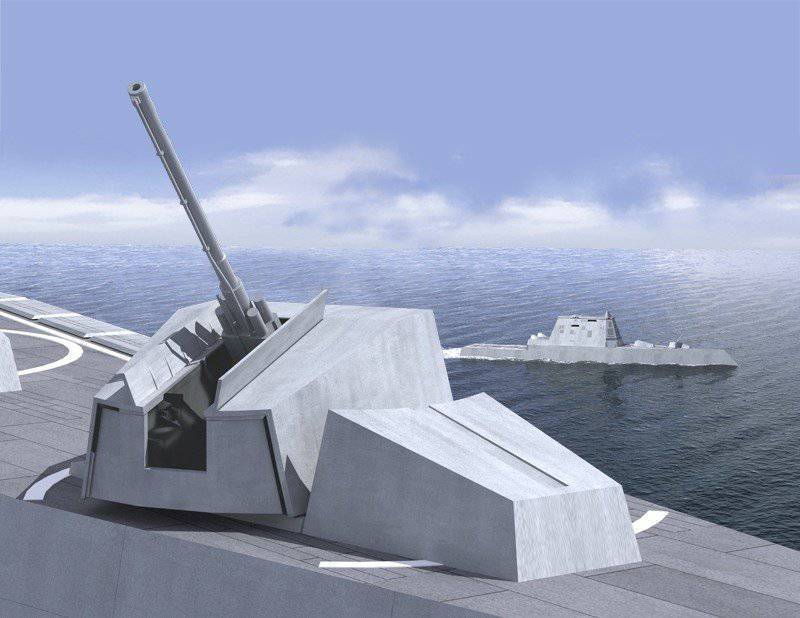
Aviation Detachment
Two heavy anti-submarine helicopters Ka-65 "Minoga". Two unmanned AWACS tiltrotor. Four UAVs of optical and electronic intelligence. Helicopters and convertiplanes appear to be machines of approximately the same class with unification for TV7-117VK engines with a capacity of 3 liters each. With. every. Two AFAR NO000 Belka radars, designed for the Su-36 fighter, are located in the front and rear parts of the tiltrotor fuselage. The number of PPM (pcs.) - 57 1. The size of the antenna fabric (mm) - 526 × 700. The frequency range of the locator (GHz) - from 900 to 8 - is, in general, all that is reliably known about it from the media. Having studied the previous sample on Wikipedia, it can be assumed that the target detection range with an EPR of 12 m² will be 1 km; the number of simultaneously tracked targets - 400; viewing angles in azimuth and elevation: ±62 degrees.
While our fleet does not have a full-fledged aircraft carrier with a catapult for using the Hawkeye-type AWACS aircraft, such an almost aircraft is quite suitable for the needs of cruisers and large destroyers. As a mandatory attribute of a destroyer-class ship, I will mention the presence on board of four four-barreled launchers (torpedo tubes) of NATO caliber Paket-NK.
... but we will not disgrace the Fleet
Probably, those who like to save money on the country's defense capability and, in particular, on the power of the ocean fleet, no longer have enough fingers on their limbs to count the people's billions, further it will be even more expensive and more painful ...
As can be seen from the figures, the hull of our ship in many respects resembles the American DDG-1000, but for greater stability when heeling, the side hall inward starts from one and a half meters above the water surface.
I did not want to repeat the American mistakes and risk the stability of the warship for the sake of low visibility. In the turbulent waters of our northern and Far Eastern seas, two pairs of side keels and a pair of active roll stabilizers will not be superfluous. The area of the upper part of the superstructure is reduced to the necessary minimum to ensure an impeccable position from the point of view of the radar of the 3D radar described above.
The design does not contain bulky pipes for air intake and exhaust gases from the ship's power plant, built on the principles of operation of internal combustion engines. A roaring, fiery engine replaces the quietly purring nuclear reactor.
The following fact is not particularly advertised, but the following fact is not very well known to the general public.
Soviet nuclear submarines pr. 945 "Barracuda", pr. 945A "Condor", pr. 971 "Pike-B", already Russian nuclear submarines pr. 885 "Ash" and pr. and run on water-cooled nuclear reactors of the OK-955 family with a thermal power of 650–180 MW of various modifications. On the nuclear submarine pr. 190A "Antey" and pr. 949 "Shark" such reactors are in pairs.
In terms of striking power of only comparable weapons, the ship proposed for construction will surpass the modern Yasen-M, add to this an air defense zone with a radius of at least 150 km closed for flights of anti-submarine aircraft and the ability to “remove” objectionable spacecraft from near-Earth orbit. Is it possible to save an extra serial reactor with a turbo-gear unit on this?!
Yes, the ship of the first rank will be with one screw, perhaps in the future the power on the screw of the steam turbine unit and the main turbo-gear unit will be increased to 60 hp. s., but even the power of 000 liters currently existing on the nuclear submarine. With. are quite sufficient for long-term patrol duty at their strategic bases and SSBN patrol areas. The entire propulsion and energy complex "Borea" occupies 50% of the length of the boat or 000 meters with the largest width of the hull 40 m.
Thus, to place such a power plant in the hull of a destroyer with a maximum width of 23 meters and a draft of 8 meters will not be difficult. And even vice versa, the relatively large width of the ship in comparison with classmates, originally designed for greater stability and creating favorable working conditions for the 3D radar, will enhance the safety of the reactor by creating constructive anti-torpedo protection following the example of the best examples of battlecruisers of the Second World War, its thickness may well be within four meters on each side.
By the way, two compensators of 22 tons each are provided on a not the largest French nuclear aircraft carrier to maintain and stabilize the roll, in our case, empty anti-torpedo protection tanks in stormy weather can be filled with outboard water with a much greater weight.
I didn't think I'd ever write this, but as a matter of common sense, the maximum possible speed is not important for our ship.
In principle, the project - he should not catch up with anyone (enemy nuclear submarines or aircraft carriers, and even more so some Maghreb pirates). Hypersonic Zircons, supersonic missiles / PLURs or three-kilogram shells will meet and catch up.
If a third heavier and slightly longer Borey with its energy is capable of showing 29 full speed knots under water, 25 knots is quite enough for our destroyer, because it does not yet need to accompany an aircraft carrier when providing take-off and landing activities.
On the other hand, it is much more important to ensure the optimal course and low noise during long-term patrolling of the water area with a flexible extended towed antenna (GPBA) and a bow HOOK.
And, probably, a power plant with roots originating from submarines, for which silence and secrecy are the main weapon and advantage, will fit like nothing else. By the way, "Ash" and "Borea" are similar not only in reactors, but also in models of sonar systems "Irtysh-Amphora".
In simplicity, the sincere author drew the dimensions of the destroyer's nose fairing for an adapted version for a surface ship.
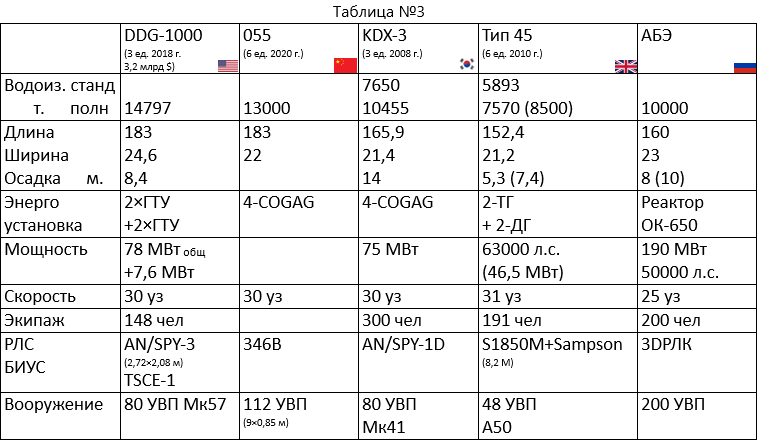
As can be seen from Table No. 3, from 1,5 to 3 thousand tons of the total displacement of ships is the stock of motor fuel for the power plant. And this is not the safest ballast on the ship, given the presence of huge arsenals of rockets and shells with powder engines and warhead filling. No wonder the name sounded long out of use the word "armored".
Based on the drawings, the destroyer has a full-fledged armored deck 30 meters long from the 130-meter mark from the stern to the 50-meter mark in the bow. Its thickness is 68 millimeters of armor, as on Soviet artillery cruisers of the post-war construction of project XNUMX bis. It actually divides the ship's hull in half along the lower waterline mark. A kind of under-deck armored citadel is formed around the ship's energy compartments, including a nuclear reactor.
The stern and bow armor beams of the same thickness from the second bottom to the armor deck are located at 30 and 130 meters. Vertical longitudinal main armored anti-torpedo bulkheads, also 50 mm thick and high from the second bottom to the armored deck, complete the protected below-deck space. Its dimensions are 100 meters long, 14 meters wide and 7 meters high.
But that's not all.
To protect the interior of the ship from the missile arsenal located in the bow, we will install a transverse armor bulkhead of the same thickness in the area of 95 meters from the armor to the upper deck, between the underdeck rooms of the bow guns and UVP 3S14.
According to the author's calculations, the weight of the armor on the ship will be 1 tons, which is fully compensated by the lack of an appropriate amount of organic fuel on board.
A bit of romance and sentimentalism
Nuclear, armored, missile defense / anti-aircraft destroyer ... And what names will the ships of this series bear? Two series of frigates with the names of admirals, well-known and not so famous, of the Russian Imperial Fleet and the Fleet of the Soviet Union, monarchists and children of the revolution, party nomenklatura proteges and henchmen, innovators and retrogrades.
Whether it's the case, if you remember the cruiser-"pebbles": "Diamond", "Emerald", "Pearl", or the goddess of domestic shipbuilding: "Pallada", "Diana", "Aurora".
Not being a supporter of fatalism and superstitions in the assignment of fatal names and renaming of ships, allegedly repeating the fate of the predecessors who previously bore these names, I would still like to see some continuity in this matter to more neutral and non-politicized names, something like “Royal Oak ” in the English style or poetically, like the Japanese - “Autumn Moon”.
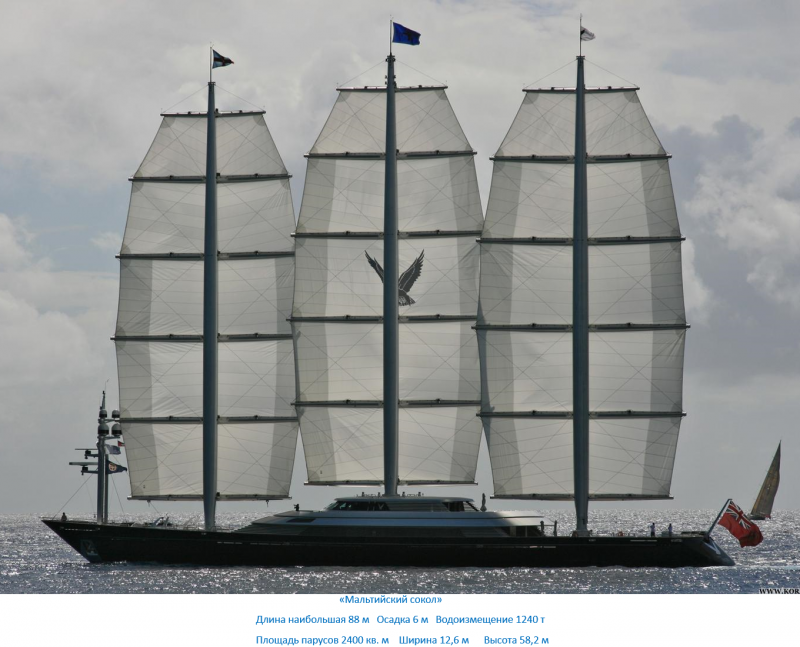
I congratulate you all on the New Year of Victory!
Information